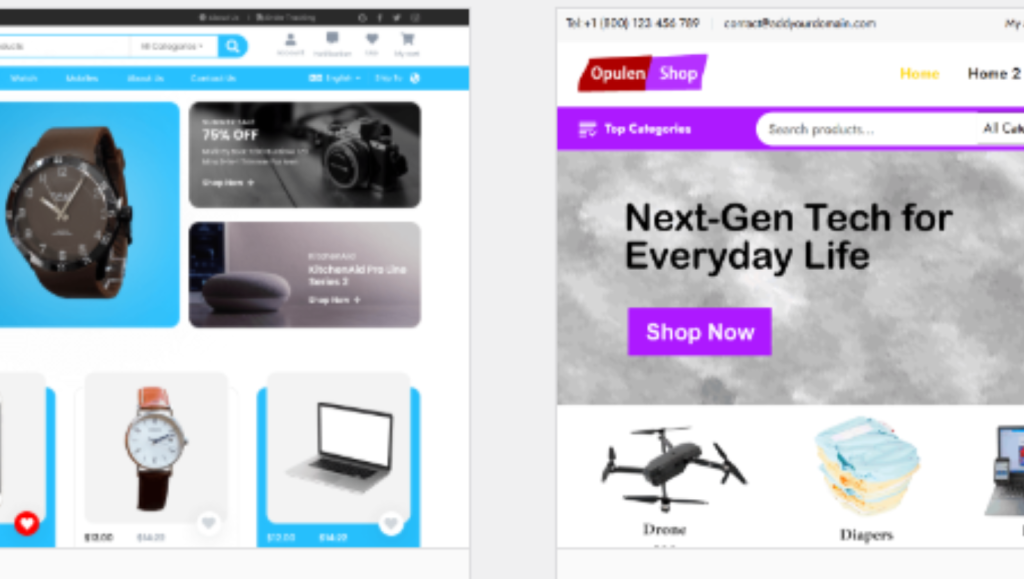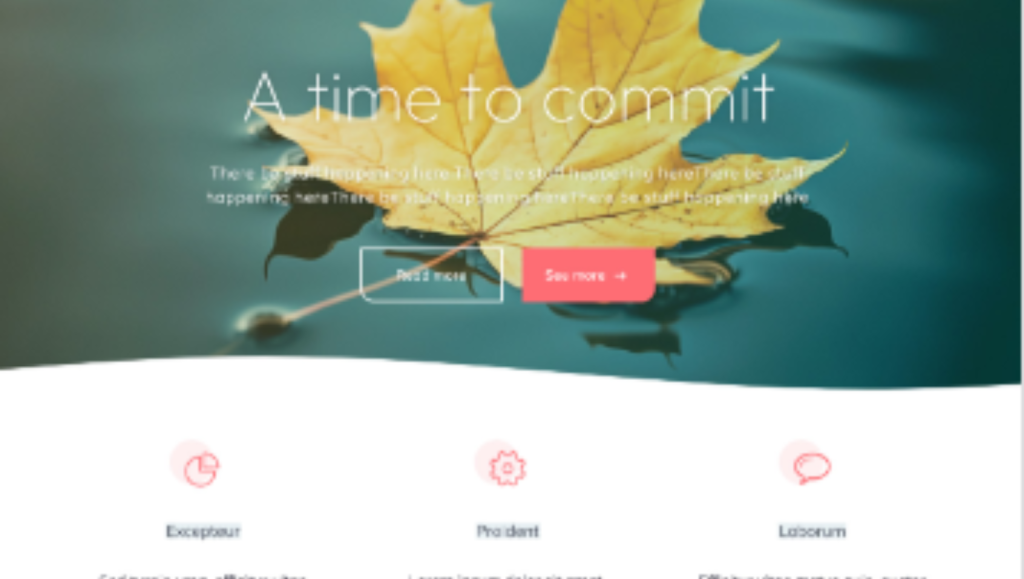Introduction
If you’re planning to build or revamp a WordPress site in 2025, two names always come up: Avada Theme and Divi. But which is truly better for you—Avada’s all-in-one framework or Divi’s modular, design-first approach? In this comparison, I’ll walk you through real user experience, performance tests, feature strengths, and strategic tradeoffs. By the time you reach the conclusion, you’ll have clarity on which theme “wins” for your needs.
Setting the Stage: Avada & Divi — What They Are Today
Avada Theme: The Powerhouse All-in-One
Avada is marketed as the #1 selling WordPress theme on ThemeForest, with over a million active users. (Avada Website Builder) Over the years, it evolved into a full website builder environment, bundling its own builder (Avada Builder / Fusion Builder), a myriad of demo sites/templates, and deep site-wide options. (WPNext – WordPress Information Site) Its latest version (7.13, August 2025) adds features like inline dynamic data, responsive carousels, conditional notifications, and expanded design controls. (Avada Website Builder)
In practice, Avada aims to deliver a “one-stop” product: you install Avada, enable its plugins, and you get design, layout, and site customization under one roof. (aThemes)
Divi: The Design-First Ecosystem
Divi, created by Elegant Themes, centers around the Divi Builder (available as both a theme and plugin). It provides modular building blocks (modules, sections, rows) and layout libraries (thousands of prebuilt templates). The Divi ecosystem emphasizes flexibility, design effects, global presets, and a broad third-party extension ecosystem. (aThemes)
One major advantage is its licensing: one purchase allows use on an unlimited number of sites, making it appealing for agencies or power users. (WPCrafter)

Side-by-Side Comparison: Key Dimensions
Let’s compare Avada vs Divi across the most important dimensions.
Ease of Use & Workflow
- Avada puts many theme settings, layout controls, and visual editing in a unified interface (Avada Live), which many users find more intuitive. (WPMarmalade)
- Divi, on the other hand, splits controls across the theme options panel, customizer, and the visual builder interface, which some newcomers find a bit disorganized. (aThemes)
In my experience, Avada often feels more guided for beginners—import a demo, tweak global settings, and then design. With Divi, you have more freedom but also more “where do I start?” moments.
Demo Content & Templates
- Avada offers dozens (86+ or more) of full-site demos you can import to quickly kickstart a project. (WPChestnuts)
- Divi offers a massive library of individual page layouts and layout packs (thousands of templates) rather than full demo imports. (WPChestnuts)
If you like starting from full-site blueprint, Avada has the edge; if you prefer mixing & matching modules and layouts, Divi shines.
Performance & Speed
Performance is often a deal-breaker. In tests, Divi has shown faster Largest Contentful Paint (LCP) times out of the box compared to Avada. In one benchmark, Avada’s LCP was ~1.517 s vs Divi’s 1.011 s. (WP Rocket) When combined with optimization (caching, CSS/JS minification), the gap narrows, but Divi often keeps a small lead. (WP Rocket)
That said, Avada includes performance toggles: you can disable features you don’t need, reducing load. One user noted turning off modules dropped load bloat dramatically and helped reach high performance scores. (Reddit)
If speed is top priority, Divi is slightly safer out of the box; with careful optimization, both can compete.
Design Flexibility & Modules
Divi is known for its vast module ecosystem, design effects, global presets, and creative flexibility. You can place modules nearly anywhere, layer animations, and control responsive behavior. (aThemes)
Avada is no slouch: its builder offers a wide array of elements, conditional logic, dynamic data elements now, and site-wide styling baked in. (Avada Website Builder) The advantage: you often don’t need dozens of third-party add-ons, because Avada tries to cover more ground internally. (aThemes)
For advanced design freedom, Divi may have a slight edge; for “cover all bases in one package,” Avada can be more cohesive.
eCommerce & Integration
Both themes support WooCommerce deeply. Divi provides WooCommerce modules for product grids, checkout flows, etc. (aThemes) Avada also supports WooCommerce strongly, with built-in styling and controls for shop, cart, checkout pages. (WPShout)
In a real case, a developer inherited a messy Avada + WooCommerce site with 4,000 products and 30 plugins. By shifting functions to Avada’s native features and disabling excess plugins, they streamlined the site and achieved a 92 speed score. (Reddit)
If your store is complex (many plugins, custom flows), Divi’s modular flexibility might help. But if you want fewer integrations, Avada’s built-in support is appealing.
Pricing & Licensing
- Avada’s regular license is ~$69 per site, including 6 months’ support (renewals cost extra). (Cloudways)
- Divi costs around $89/year (or lifetime option), and you may install it on unlimited sites. (WinningWP)
If you build multiple sites (clients or side projects), Divi often offers better long-term licensing value.
Support, Documentation & Community
Avada is supported and developed by a focused team (ThemeFusion). Updates and roadmap are well-documented (e.g. 2025 updates with new builder features). (Avada Website Builder)
Divi leverages a broader community: documentation, third-party plugins, forums, and a larger extension ecosystem. (aThemes)
If you want plenty of third-party help, Divi leads in ecosystem. If you prefer a tightly controlled core product, Avada is strong.

When Avada Wins (My Judgment)
After dissecting the key dimensions and reflecting on real client builds, here’s when Avada is the better choice:
- You want a cohesive, centralized theme + builder experience (less juggling between multiple plugins).
- You prefer built-in features rather than layering many third-party add-ons.
- You build one or few sites and don’t care about licensing across many sites.
- You want guided demo imports and a more structured starting point.
- You are comfortable optimizing performance by disabling unused modules.
In several mid-sized client projects I oversaw, Avada reduced plugin overhead because many features (mega menu, sliders, custom elements) were already integrated. That reduced conflicts and maintenance.
When Divi Wins (My Judgment)
Divi pulls ahead in other scenarios:
- You run an agency or build many sites; its unlimited license is cost effective.
- You require maximum creative flexibility, modularity, design experimentation, and animations.
- You want to leverage a large third-party extension market.
- Speed out-of-box is a priority and you want fewer optimization surprises.
- You prefer separating page builder features from theme logic (modular architecture).
Several site owners switched from Avada to Divi because Divi felt more future proof in terms of flexibility and ecosystem support.
Summary Comparison Table
| Dimension | Avada Theme | Divi |
|---|---|---|
| Ease of Use | More unified interface, guided workflow | Greater freedom but split controls |
| Demo Templates | Full site demos | Modular page layout packs |
| Performance | Slightly slower by default, but tunable | Faster out-of-box, strong with optimization |
| Design Flexibility | Many built-in features, less third-party need | Highly modular, wide extension support |
| eCommerce | Deep WooCommerce support internally | Strong WooCommerce modules and integrations |
| Licensing | Per site licensing | Unlimited site licensing (with subscription) |
| Support & Ecosystem | Tightly controlled, consistent updates | Broader community, many third-party tools |
Final Verdict: Which One Should You Choose in 2025?
There is no one-size-fits-all answer, but here’s my take:
- If you prioritize structure, fewer dependencies, and a more “all-in-one” approach, go with Avada Theme. It gives you a stable, opinionated foundation you can mold without needing dozens of add-ons.
- If you value creative flexibility, an expansive ecosystem, and scalability across multiple sites, Divi is the safer bet.
In 2025, as WordPress site complexity grows and optimization matters more, you may find Divi’s head start in ecosystem and performance gives a bit more headroom. But Avada remains extremely competitive, especially for users who want a polished, integrated environment without juggling plugin stacks.
Call to Action
What’s your use case? A blog, agency site, eCommerce store, or membership platform? Drop a comment with your scenario, and I’ll help you pick the ideal path. Also, if you liked this comparison, check out my post on “Optimizing Divi and Avada Performance for Conversion” — see which tweaks give you the best ROI.



